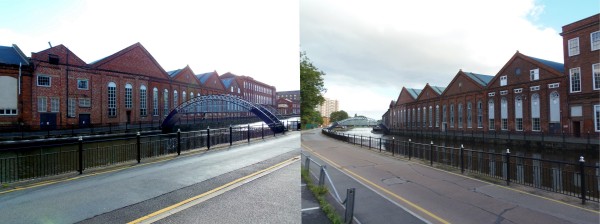Lincoln was about to go through immense change, Richard Ellison had purchased a 999 year lease on the Fosdyke Canal in 1740 and set about improving navigation on the canal and the river Witham east of Lincoln. Farm produce and others goods could be sent from Lincoln by barge to other parts of the country and coal and lime could be brought in. Lincoln, surrounded by agriculture, was late in embracing the Industrial Revolution.
It was the 1840s when the Industrial Revolution arrived in Lincoln. These people made a massive contribution to the growth of prosperity of Lincoln, click on the links to learn about their companies
William Rainforth
Nathaniel Clayton and Joseph Shuttleworth
Richard Duckering
Robert Robey
William Foster
Joseph Ruston
John Cooke
 |
| Lincoln's Waterside Industrial Area Today |
Lincoln was one of the last major centres of population in England connected to the railway, the Midland Railway arrived in Lincoln in 1846 and the Great Northern in 1848, bringing with them traffic delays on Lincoln’s High Street.
In the period 1841 to 1861 Lincoln’s population grew by over 50% to almost 21,000, the population of St Swithin’s and St Peter at Gowts parishes, where most of the engineering firms were based, almost doubled. At the end of the 19th century the population of Lincoln was 48,784 more than three times that of Boston.
 |
| Clayton & Shuttleworth's Iron Works in 1869 |

No comments:
Post a Comment